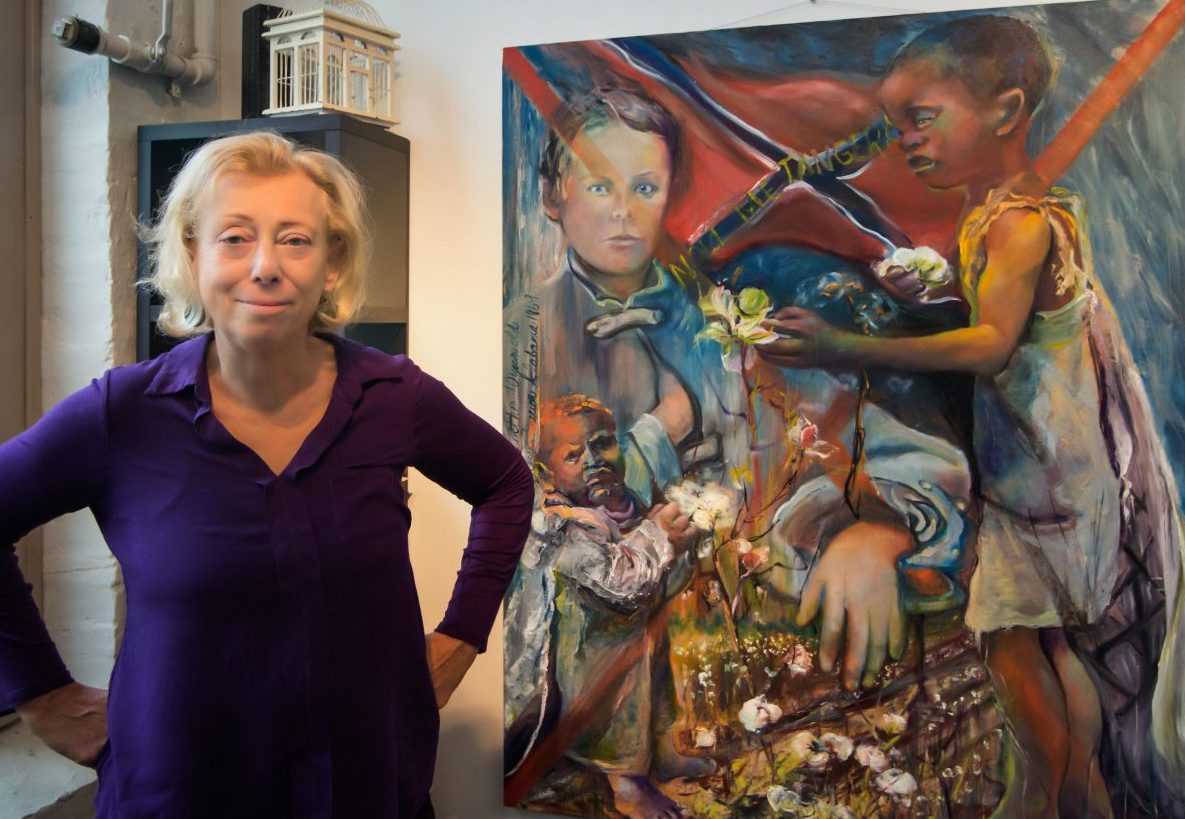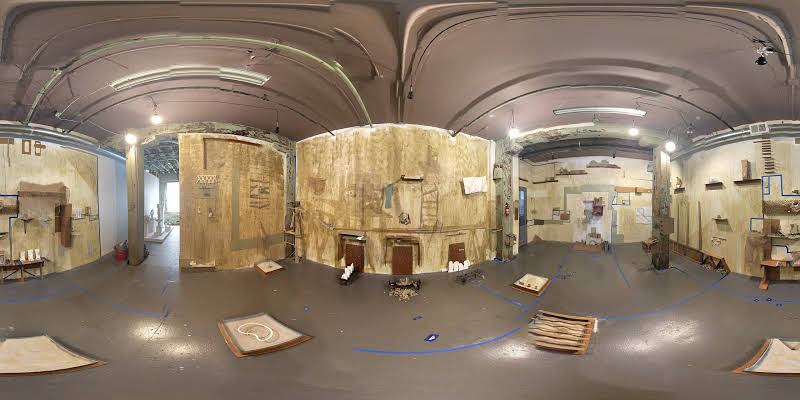A Comparison of Immersive Environments at Current and |’sindikit|
by Amber Eve Anderson
Two new installations are now on view in Baltimore: Existence and Properties are Inferred by Jonathan Latiano at Current Space and A Collaboration by Cheeny Celebrado-Royer and Cindy Cheng at |’sindikit| at Area 405. These works offer the opportunity to experience immersive environments in which the space of the gallery is completely transformed by the artists. Both use a combination of handmade elements and found objects to explore concepts of destruction and reconstruction, allowing visitors to meander somewhere between chaos and control.
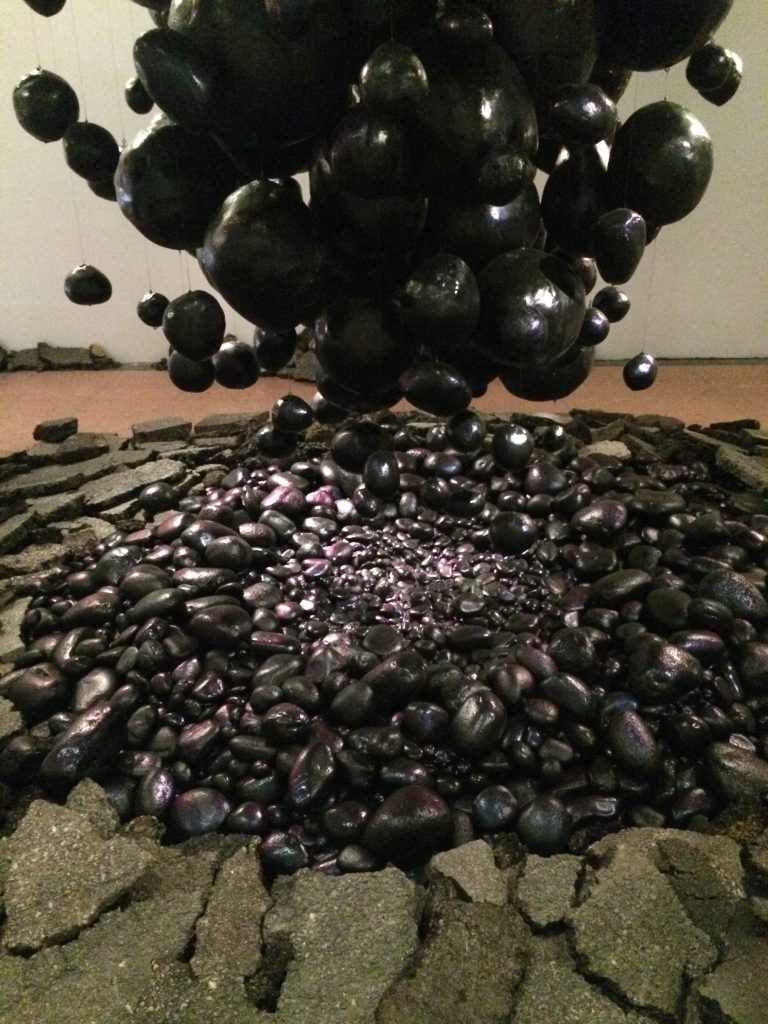
Coming into the dim, cool space from the light and heat of midday, Latiano’s Existence and Properties are Inferred feels very dark, but actually grows brighter as time passes inside. Only only six bulbs light the entire gallery, each with multiple filters to disperse the flow of light. The installation as a whole has a strong centripetal force about it. In the center of the gallery, a cluster of black orbs dangles from a latticework support structure hanging from the ceiling. Below the cluster is a concave pile of smooth river stones painted a luminescent black. At the center lie the smallest stones, the larger ones growing out of them. Just beyond the overhanging perimeter of orbs begins a bed of broken asphalt chunks. These wind through the gallery and extend to one corner with two other gashes of the smooth river stones. The gallery floor remains exposed in an arc around the central hanging sculptural element, piles of asphalt and stones linger along the edges of the room, the walls of the gallery a stark white.
Everything about the installation is highly controlled. The scene points toward destruction, but decay would feel more organic whereas the precision and placement here feels manmade. The work holds its breath. The orbs don’t seem to float or fall, but hang motionless, frozen. The materials arranged on the floor sit heavily rather than swirl energetically.
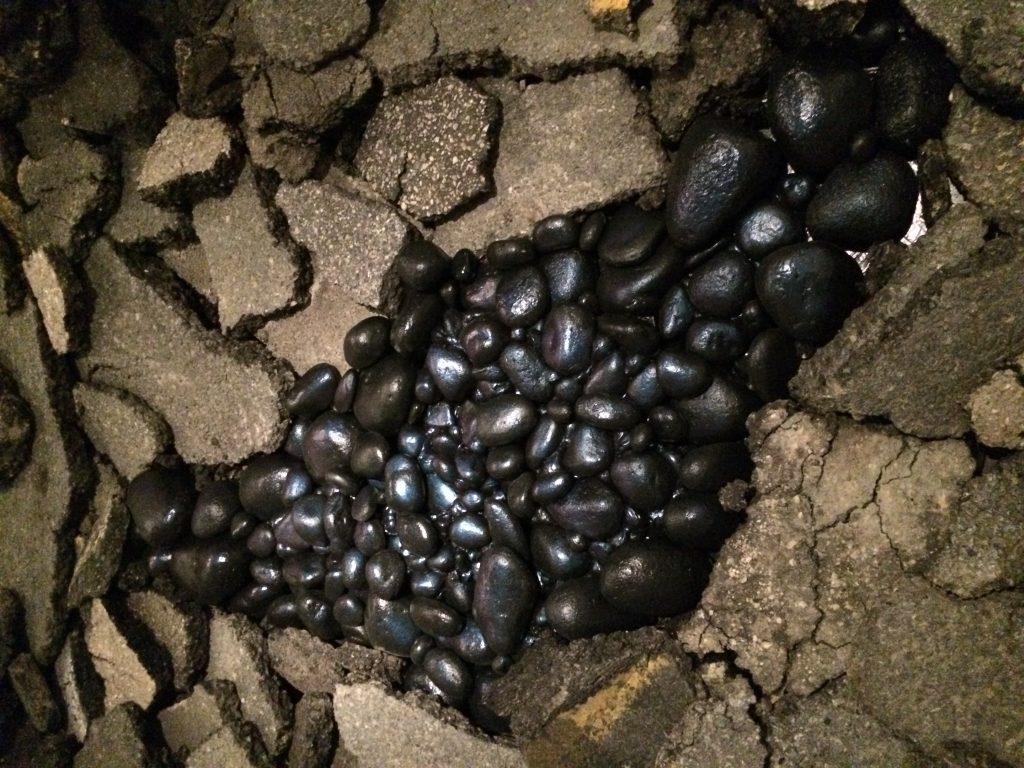
Compared to images of Latiano’s previous work, this installation lacks a dynamic spark. And even though all of the materials the artist used are practically black, as a whole the work doesn’t feel dark enough. As my eyes adjusted, the white walls became a distraction that acted as a glaring blank space in which the edges fall off, rather than hold the piece together; the paper-covered windows don’t entirely block the light from outside.
I wanted to be seduced by heavy black velvet drapes like I was by the shimmering quality of the iridescent stones, but the installation somehow feels bare and barren, even though it is filled with thousands of pounds of physical material. Rather than consider my own place in the desolate landscape of an imagined future, the work instead highlights the edges of where the piece ends and the gallery begins. It isolates the viewer in a cold, empty nowhere.
In contrast, A Collaboration by Celebrado-Royer and Cheng places the viewer distinctly in the middle of the installation. Whereas Existence requires the viewer to walk around the central element, A Collaboration moves very much around the perimeter. The walls are covered with small sculptural arrangements which are aided and organized by blue painter’s tape that defines space and connects the floor where cardboard squares of sand and wire mesh sit. The installation seems to grow organically in all directions. The ceiling even becomes a part of the installation where black painted light bulbs hang.
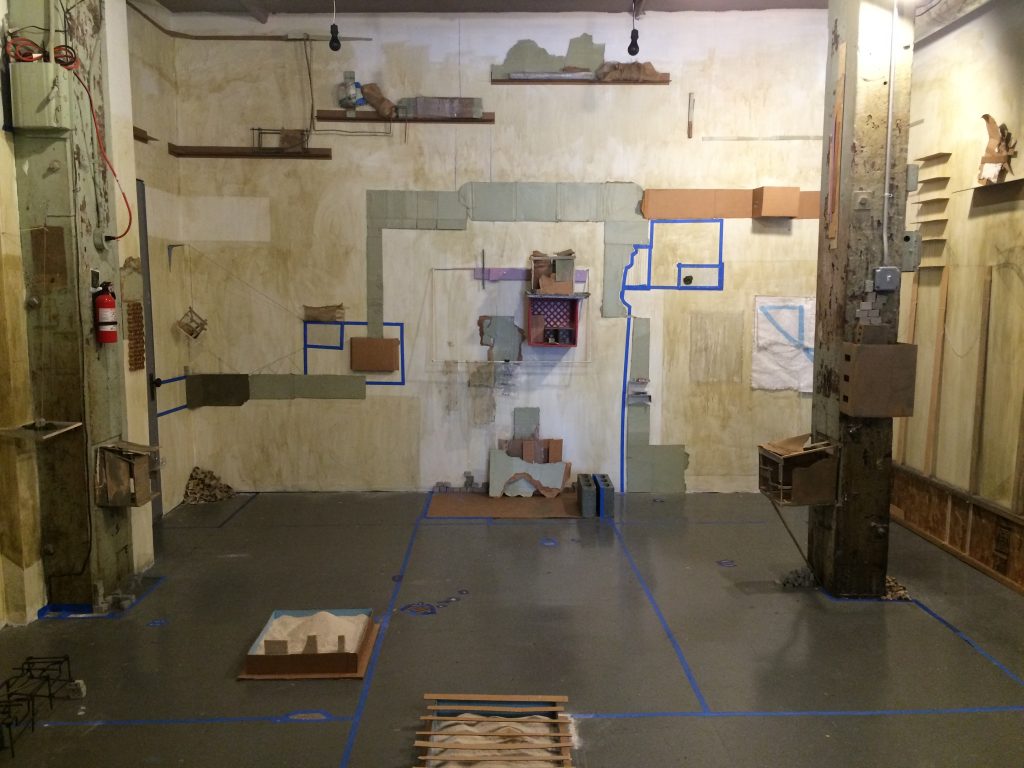
Like Existence, A Collaboration is primarily made out of found materials, but uses the discarded materials of transience rather than the perfected materials of time—cardboard, string, burlap, plaster. Celebrado-Royer and Cheng use these destitute, temporary materials to construct something which is greater. Portability is a key element. The heaviest items in the exhibition are two cinder blocks, but those are matched by handmade miniature two-inch cinder blocks scattered throughout the installation. The miniaturization suggests playing blocks, perhaps the Soviet-era or developing world equivalent of Lincoln Logs. Being inside of A Collaboration contributes to a feeling of participation and belonging, almost like I could pick up one of the miniature cinder blocks myself and start building.
The installation invites lingering and rewards these moments with pleasant surprises. A playful quality pervades the exhibition—slight shadows of non-existent furniture decorate one wall, an empty sandbag hanging from a clothesline, blue taped borders around flaws in the floor of the gallery, a red milk crate as part of a building, packaging air pillows dipped in plaster, notes scribbled in pencil in another language on the wall.
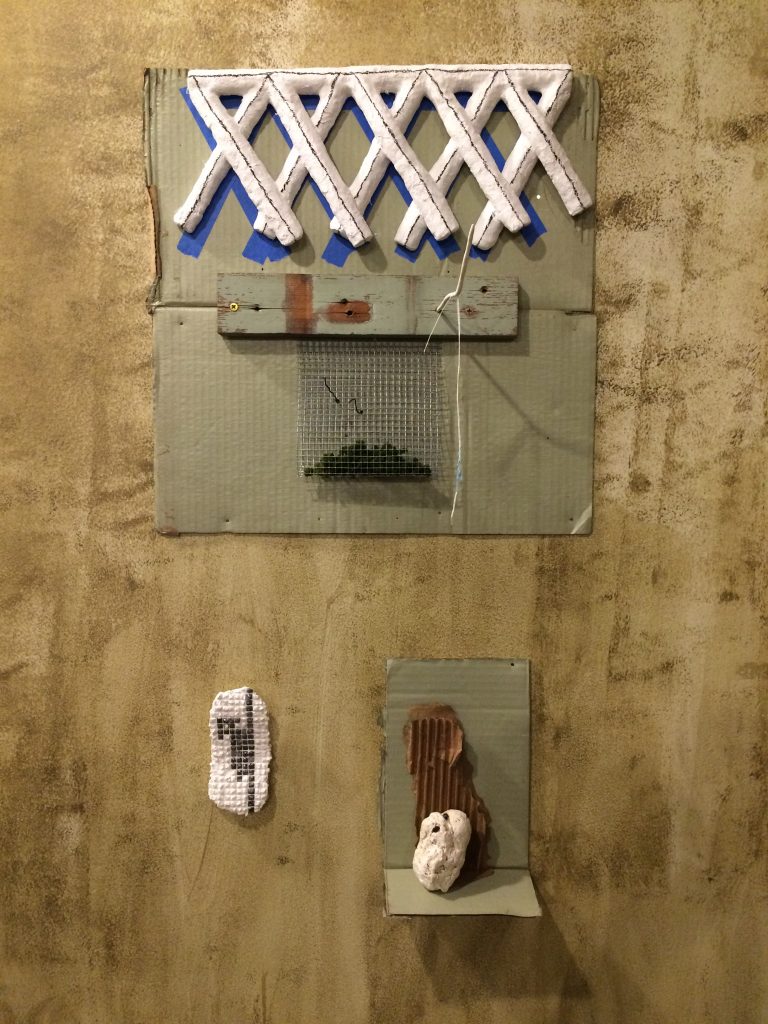
Whereas Latiano’s work presents a perfected barren landscape of the future, Celebrado-Royer and Cheng work with broken elements of the present to construct something brighter, using the act of play to impose a sense of order from disarray.
A Collaboration works with the limitations of the space, exploiting the nuances and inconsistencies to the benefit of their installation. With the walls washed to a streaked tan, elements of the space like paint-chipped support beams and even the fire extinguisher become integral to the work. Even though most of the materials are ripped or broken and almost everything is brown, the installation manages to feel very bright and hopeful, the childlike qualities contributing to an overall sense of possibility. Compared to the blackness and blankness of Existence, and it’s surprising how, given the similarities between the two installations—where chaotic destruction meet ordered control—they could produce such distinct effects. A Collaboration invites, while Existence isolates.
Both of these installations represent an ambitious effort at transformation—of materials, of spaces and of our experience. They offer the space of the gallery as a place of radical exploration. They present an opportunity to not only view a work of art on a wall or pedestal, but to step inside a complete environment. Using everyday materials—asphalt, rocks, cardboard, sand and string—they allow us to magically step outside our world and into another.
*****
Author Amber Eve Anderson is a Baltimore-based multidisciplinary artist whose work uses images, objects and language to explore themes of place and displacement. She is a recent graduate of the Mount Royal School of Art MFA program at MICA.
Existence and Properties are Inferred by Jonathan Latiano at Current Space was up through July 31 and A Collaboration by Cheeny Celebrado-Royer and Cindy Cheng at |’sindikit| at Area 405 is up through August 20.
